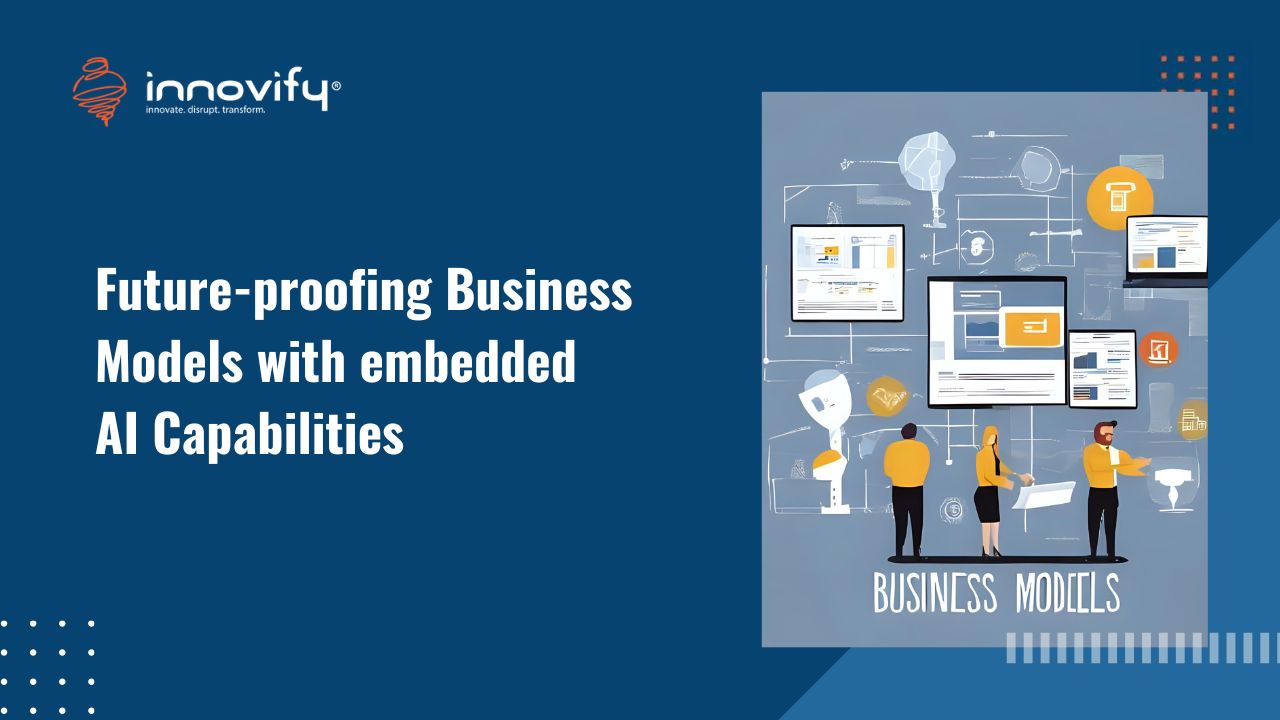AI/ML
How to Scale Up Product from MVP to MMP
Looks like you have launched your MVP and now looking forward to going full-fledged. You’re probably wondering whether it’s the right time to scale up your MVP and, most importantly, how to move forward and scale it up.
Don’t worry; you’re not the only one. Every organization with an MVP asks the same question: When to know my MVP is ready to scale, and how do I scale it?
Let’s find out.
When Your MVP is Scale Up Ready?
Launching an MVP offers a valuable opportunity for businesses to gather important information about their product and customer base. With MVP, companies can test the viability of their business idea and determine its potential for success and growth.
It is crucial to collect as much insight as possible during the MVP launch to gain a better understanding of your customers. This includes identifying who your customers are, what they are purchasing, their thoughts and feedback on the product, and their likes and dislikes. Creating a feedback loop based on this information is crucial for the next development steps.
To effectively use the feedback loop, it is important to evaluate the impact of the feedback on your actions. For example, by analyzing conversion rates and comparing them to user feedback, you can determine which aspects of your product and service are most successful.
The decision to scale an MVP should be made when you have a clear understanding of your target customer’s needs and have established your product’s position in the market. Then, if you are ready to take the next step and scale your MVP, it is essential to have a clear strategy in place.
Why Do MVP Scale-Ups Fail?
Developing an MVP is a fast process as it is straightforward to create, test, and launch. However, maintaining the baby product and fixing issues becomes increasingly challenging as the solution expands. Using a profiler can be a helpful tool to address performance issues in your MVP.
The profiler should capture data at both the database and application levels and provide answers to important questions, such as:
- How many users are using the current MVP?
- Is scaling up the backend with front-end improvements enough for a full-scale solution, or is a redesign necessary?
- What is the reason for slow performance in the MVP, the backend, or the front end?
- Is there any delay caused by the database or code?
- Are the limitations in the MVP solution found in the data or database?
However, organizations still find it challenging to scale up. Here are the most common reasons:
3 Reasons for MVP Scale-Up Failures
1.Sales-Driven MVP Roadmap
Product managers at various stages of their MVP to scaled-up product development are likely to encounter this challenge. For example, sales teams may request the development of a complex feature with the argument, “If you build this, I’ll be able to secure a huge deal.”
While this may seem like a tempting approach, it is not the most suitable approach for long-term product planning.
Product managers at fast-growing companies often find that sales teams can disrupt their MVP roadmap, causing frustration when unexpected requests arise and disrupting carefully planned strategic initiatives.
2.Growing Team
As organizations grow and expand their scrum teams from a single unit to two, three, or even four, the need for a refined development process arises.
It is because implementing lean startup techniques, which are commonly used by early-stage organizations to quickly create, test, validate, and launch new products and features, may no longer be effective.
However, the transition can take time as procedures need to be adapted to maintain efficiency, especially when multiple scrum teams are working on different projects, adding complexity to the process.
3.Subtle Focus Shift
As companies experience growth, various changes take place, such as shifts in company culture, the opening of new offices in different locations, and the addition of new employees.
These new hires may or may not share the company’s vision for the product, making it crucial for the product team to address any discrepancies.
Also, with growth comes the challenge of keeping all the stakeholders informed about the product strategy, which can become increasingly difficult. This often leads to failures in scaling up the company.
Given these challenges and reasons for MVP scale-up failures, how can you make sure you’re scaling up right?
Let’s discuss the right strategy to scale up your MVP.
How to Scale Up Your MVP to MMP
If you don’t want to follow in the footsteps of startups that didn’t make it past MVP, here are the steps to scale up your MVP:
1. Collect and Analyze Feedback
The purpose of an MVP is to gather feedback from your customers, not to conquer the market instantly. That’s why the objective of MVP development should be to incorporate the essential features required to begin showcasing the product to its intended audience.
Before the launch of your MVP, you rely on initial research and your assumptions about your customers’ likes and preferences. With a successful MVP, you get insights into what’s ideal for your target customers.
It’s important to be prepared to gather actual data from your customers as they engage with your MVP. You should monitor user behavior, interactions, and dropoff at every point of contact to identify features that can be enhanced, included, or removed as you progress from MVP to a full-fledged product.
Don’t forget to address all feedback, including negative remarks. Customers who provide negative feedback are providing a valuable service by highlighting issues you can resolve as you move beyond MVP development and into full product development.
2. Track Important Metrics
Tracking the right metrics is crucial for making informed decisions about the future of the MVP and identifying areas for improvement.
Here are some important metrics that a business should track for MVP scale-up:
- User Acquisition: Track the number of new users acquired through different channels such as paid advertising, organic search, referrals, and other marketing efforts.
- User Retention: Track how many users are returning to use the product after their first visit. This will give an idea of how well the product is meeting the needs of its users.
- User Engagement: Track the time users spend on the product, the number of actions taken, and other engagement metrics that indicate how interested and invested users are in the product.
- Conversion Rates: Track the percentage of users who take a desired action, such as signing up, making a purchase, signing up, or filling out a form.
- Revenue: Track the total revenue generated by the MVP, including both direct and indirect revenue sources.
- Customer Feedback: Collect direct user feedback to understand their needs, preferences, and pain points. This feedback can be used to improve the product and make it more appealing to users.
- Technical Metrics: Track technical metrics such as server response times, page load times, and error rates to ensure that the product is functioning smoothly and efficiently.
3. Create an MMP
After you’ve worked through an MVP and got the initial user feedback, it’s time for you to move forward by incorporating the required improvements. Businesses nowadays scale up their products by introducing new features one by one, not all at once, which is a great strategy to keep moving ahead.
Hence, the next phase after MVP isn’t the full-fledged product; it’s a minimum marketable product (MMP), aka minimum marketable release (MMR).
It’s probable that you already had additional features in mind, features that you omitted from the MVP prototype for the sake of simplicity. In addition, you may also have received suggestions from your early customers.
Here are some tips for creating your MMP:
- Focus on customer needs: Make sure you understand your target audience and what they need from your product.
- Prioritize features: Decide which features are most important to your customers and prioritize those in your MMP development process.
- Keep it simple: An MMP should have just enough features to meet customer needs, but no more. Keep it simple and avoid overloading it with unnecessary features.
- Make it visually appealing: An MMP should look professional and be easy on the eyes. Invest in a good design and user interface.
- Test and iterate: Test your MMP thoroughly and make improvements based on customer feedback. Repeat the process until you have a polished product.
- Focus on scalability: Make sure your MMP is scalable and can handle increased demand as your customer base grows.
- Keep the user experience in mind: A great user experience is key to a successful MMP. Make sure your product is easy to use and meets your target audience’s needs.
Keep in mind that as you move toward the MMP phase, it’s time to enhance the value of your products and services. Taking the example of a small restaurant delivery service, this is when you may start offering delivery on more days or in additional
locations or expanding the range of products you offer.
With the MMP, you’re moving closer to a final product. Hence, it’s important to note that the feedback loop should continue, particularly as you work toward the next stage.
4. Price Your MMP
Pricing an MMP can be tricky, as you want to ensure that you are getting the right return on investment while still being attractive to your target market.
The following are some common pricing strategies for SaaS minimum marketable products:
- Freemium Model: A free basic product version is offered, with paid premium features. For example, Dropbox offers a free basic version of its cloud storage solution, with paid plans for additional storage and features.
- Subscription Model: Customers pay a recurring fee, typically on a monthly or annual basis, to access the product. For example, Salesforce offers a subscription-based CRM platform, with pricing based on the number of users and features needed.
- Per User Model: Customers pay a fee for each user that will be using the product. For example, Asana, a project management tool, charges a per-user fee based on the number of users and the level of features needed.
- Tiered Pricing Model: Customers are offered different pricing tiers based on the level of features they require. For example, Slack, a team collaboration tool, offers a basic free version as well as paid plans (standard and plus) with increasing levels of features.
- Pay-per-Use Model: Customers pay only for the specific features they use, and the amount they pay is based on usage. For example, Amazon Web Services charges customers based on their usage of the various cloud computing services offered.
It’s important to note that the pricing strategy you choose will depend on a variety of factors, including the target market, the features offered, competitors’ pricing, and the cost of delivering the product.
Therefore, before finalizing a pricing strategy, it’s a good idea to conduct market research to determine what your target audience is willing to pay and what pricing models are already being used in the market.
5. Market Your MMP
Marketing is an important step in MVP scaling. In order to attract and retain customers, it’s essential to have a comprehensive marketing strategy in place.
Here are a few strategies and channels that businesses can use to market their MMP:
- Content Marketing: Creating and sharing valuable, relevant, and consistent content can help attract and retain a target audience. Social media posts, blog posts, videos, and infographics are all examples of content marketing.
- Influencer Marketing: Collaborating with influencers in your industry can help you reach your target audience and increase credibility.
- Paid Advertising: Paid advertising through platforms like Google AdWords, Facebook Ads, and LinkedIn Ads can help reach your target audience and generate leads.
Search Engine Optimization (SEO): Optimizing your product website and content for search engines can help you rank higher in search results and drive organic traffic to your site. - Referral Marketing: Encouraging current users to refer your product to their friends and family can help you reach a wider audience.
Email Marketing: Sending personalized emails to your subscribers can help you promote your product and increase engagement.
It’s important to keep in mind that different strategies and channels may work better for different businesses, and it’s essential to experiment and find what works best for your specific audience and product. The ultimate goal is to grow the number of users and revenue, and a well-planned marketing strategy can help you achieve this.
For instance, when Slack first launched, it was a basic team communication tool. However, the company identified the need for more features and functionalities, and as they received feedback from users, they continued to add new features to the platform.
To market its MMP, Slack leveraged a variety of strategies and channels. They used social media and content marketing to reach out to potential customers and educate them about the benefits of using Slack for team communication. Additionally, they leveraged word-of-mouth referrals and offered a free trial to users to try the product and see the value for themselves.
Slack also strategically partnered with other companies to increase their reach and visibility. For example, they partnered with Atlassian, a leading software development company, to integrate Slack into their products.
Overall, Slack’s marketing strategy for their MMP was focused on showcasing the product’s value and making it easy for potential customers to try and adopt it. By combining social media, content marketing, referrals, partnerships, and a free trial, Slack was able to market its MMP and grow its user base successfully.
6. Keep Testing and Evolving
Even after transitioning from an MVP to an MMP towards a full-fledged product, the process of testing and evaluation can not be neglected.
It’s important to continuously monitor metrics such as traffic, abandoned carts, conversions, social engagement, and customer feedback during both the MMP and product launch phases. This allows you to continually improve the customer journey and the product itself, leading to increased customer satisfaction.
Additionally, even if marketing efforts were started during the MVP phase, it is important to keep tracking the performance of campaigns and conducting A/B testing to determine the best cost-per-conversion. By leveraging the benefits of MVP testing, you can ensure the success of your product and improve its overall performance.
Your Road to a Matured Product
After launching a successful minimum marketable product (MMP), the next steps are to refine and improve the product based on user feedback and market demand. This involves incorporating new features, fixing bugs, and making design or user experience (UX) improvements.
It’s important to continue monitoring key performance indicators (KPIs) and user behavior and to adjust the product and marketing strategies as needed. You’ll have to launch new marketing campaigns, expand the product to new channels or customer segments, and experiment with new pricing strategies.
In order to continue growing and scaling the business, it may also be necessary to bring in additional resources such as funding, talent, or new partnerships. Ultimately, the goal is to build a sustainable and successful business that continues to meet the needs of its customers over the long term.



